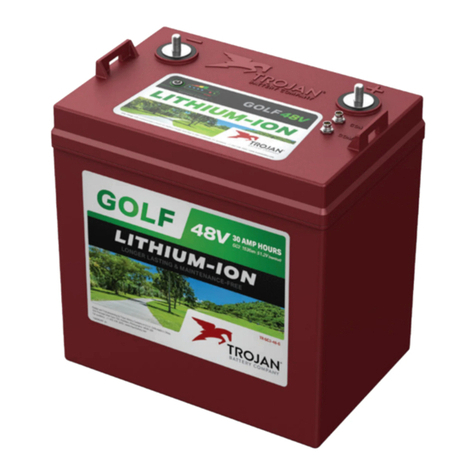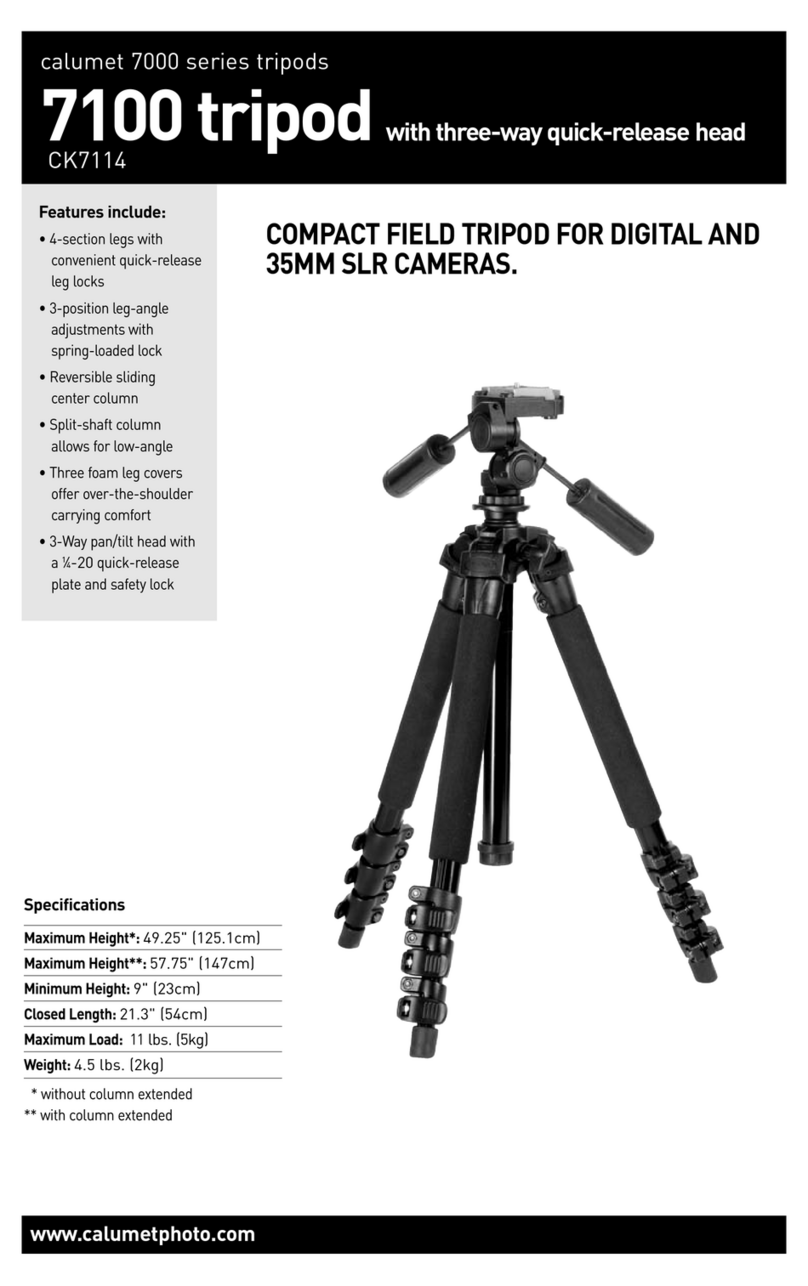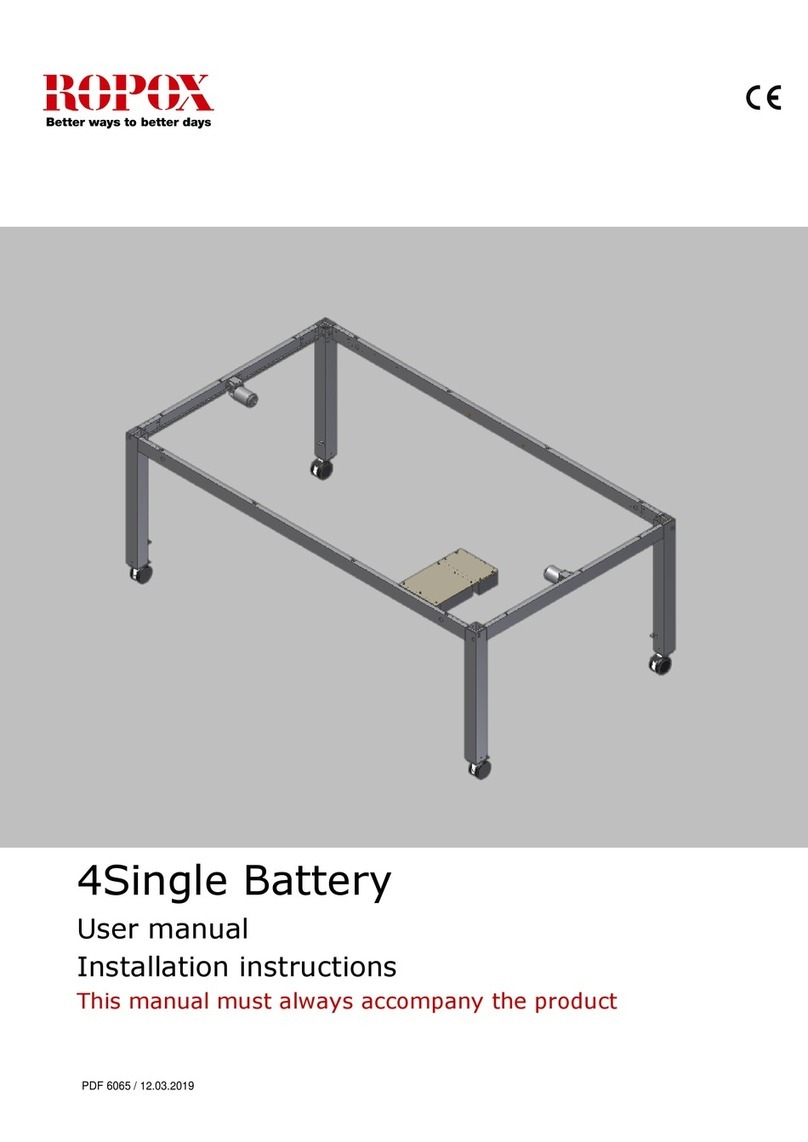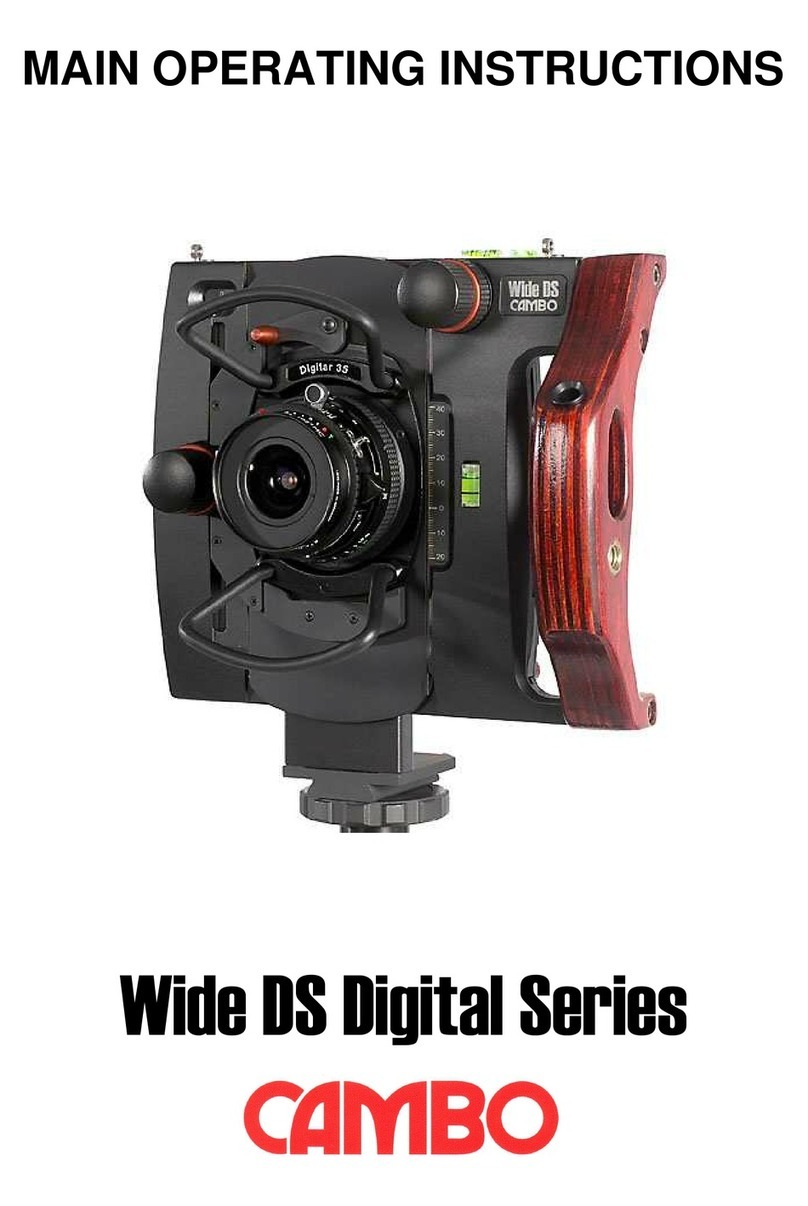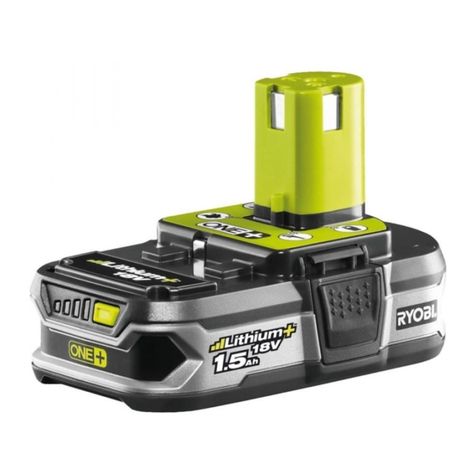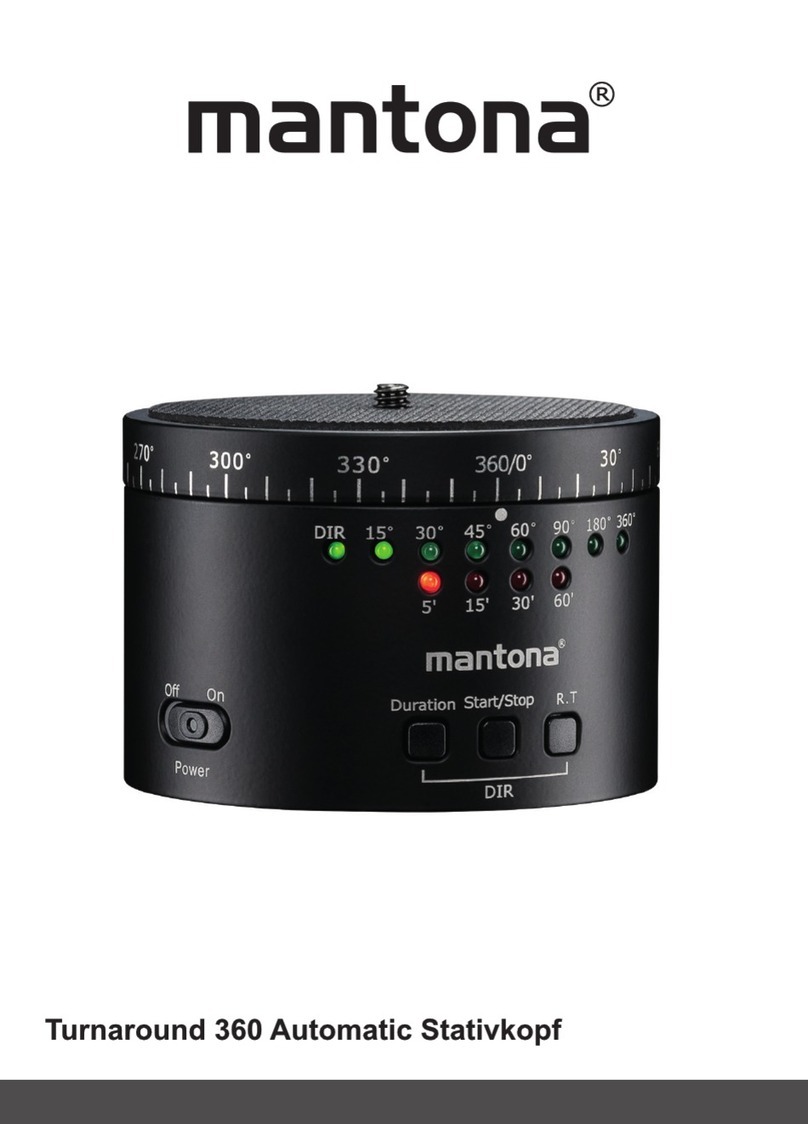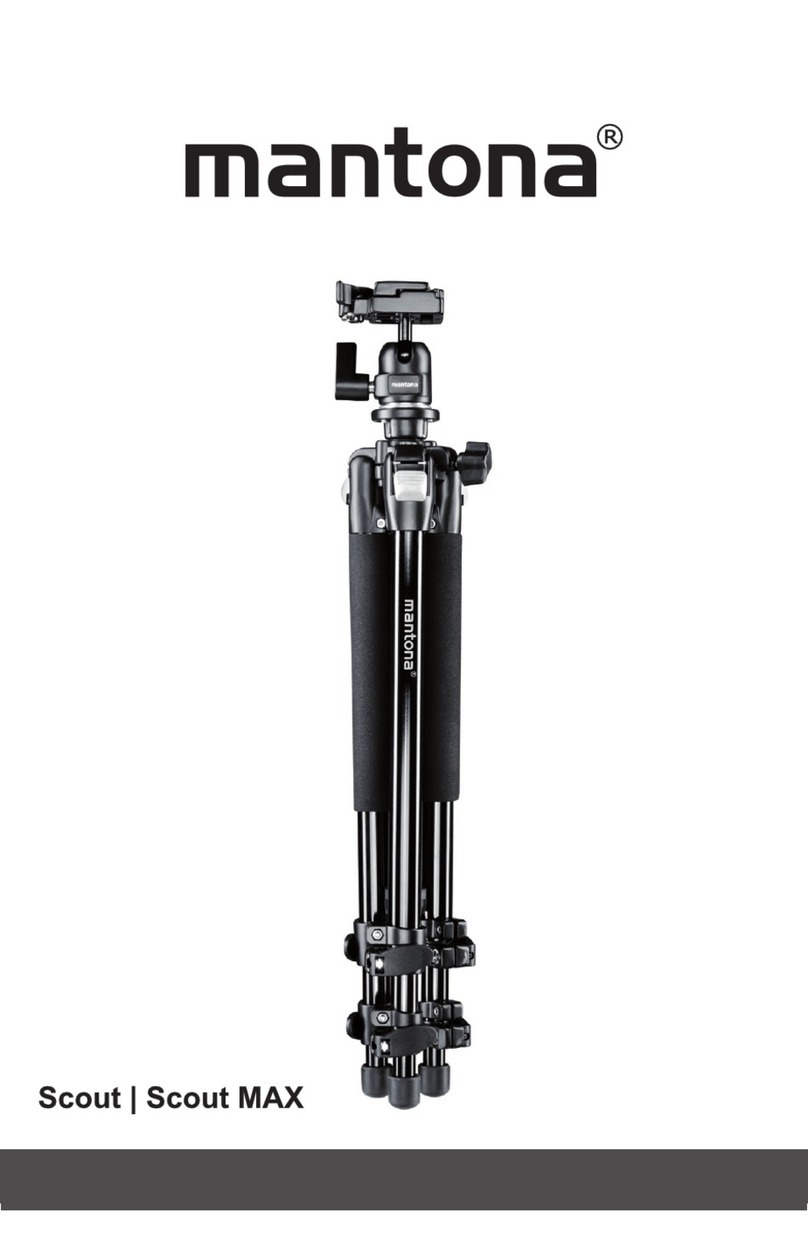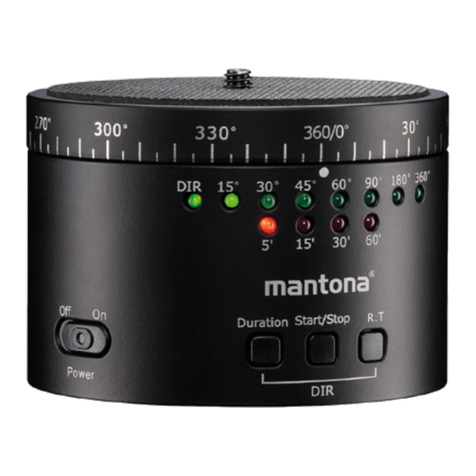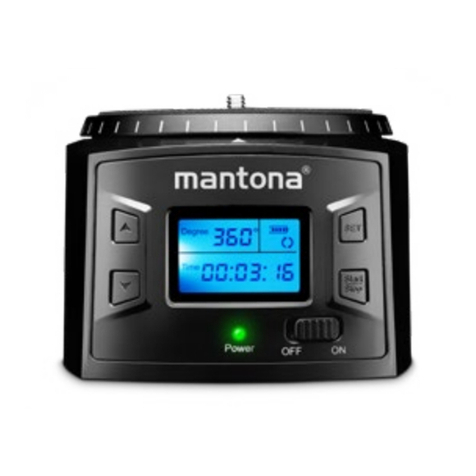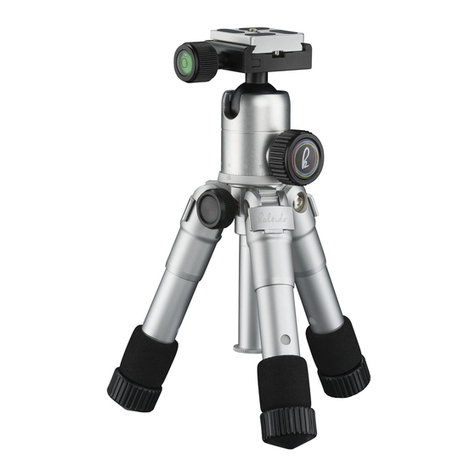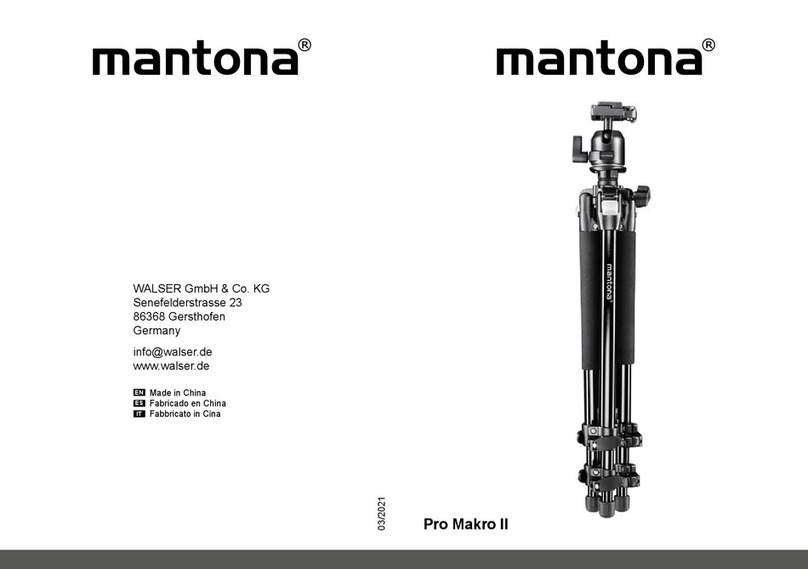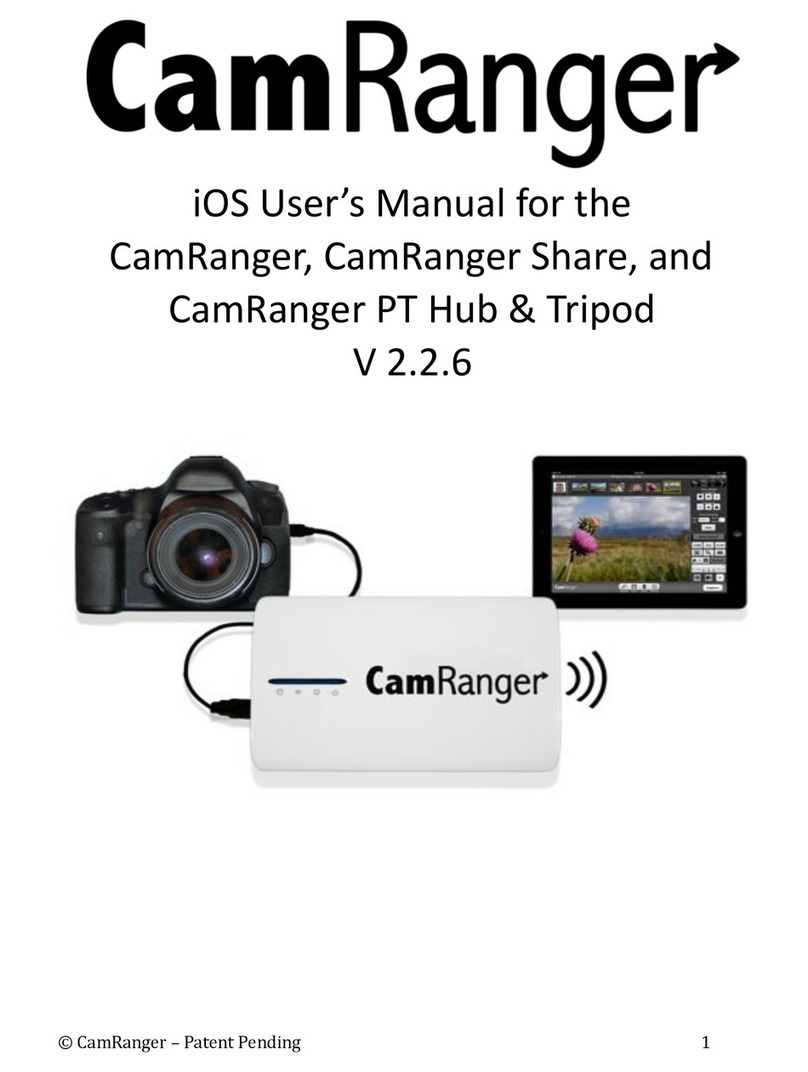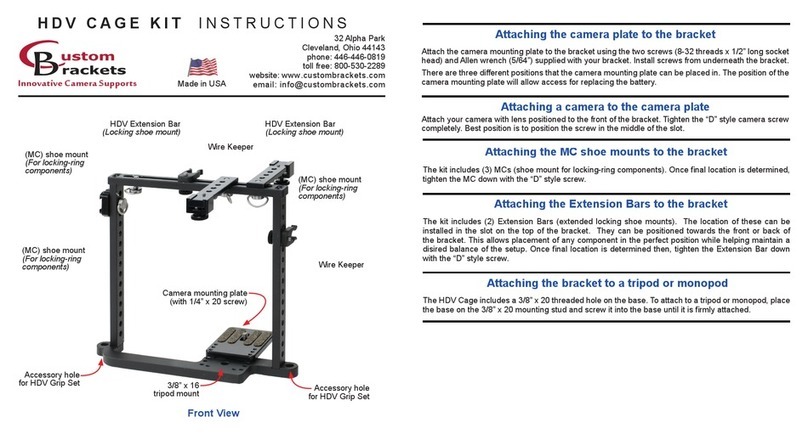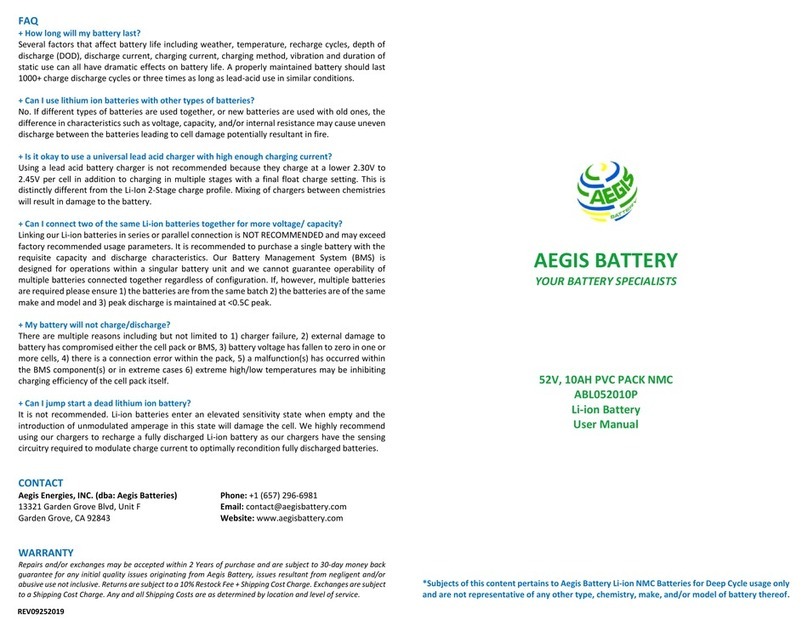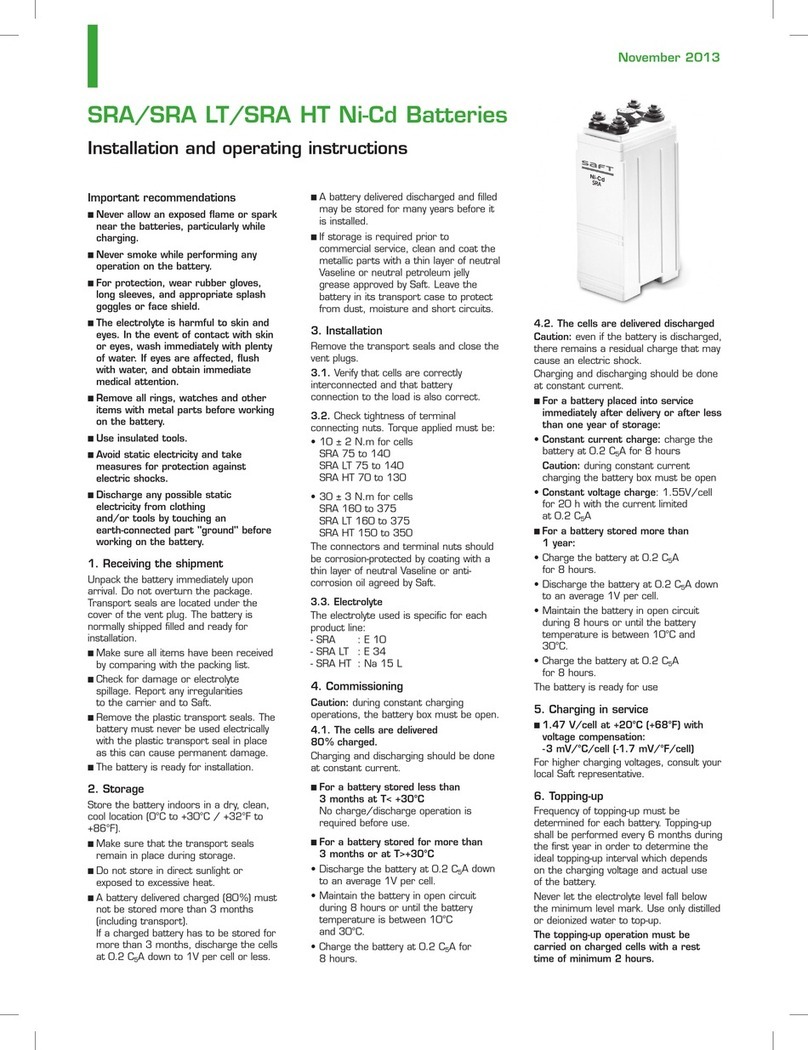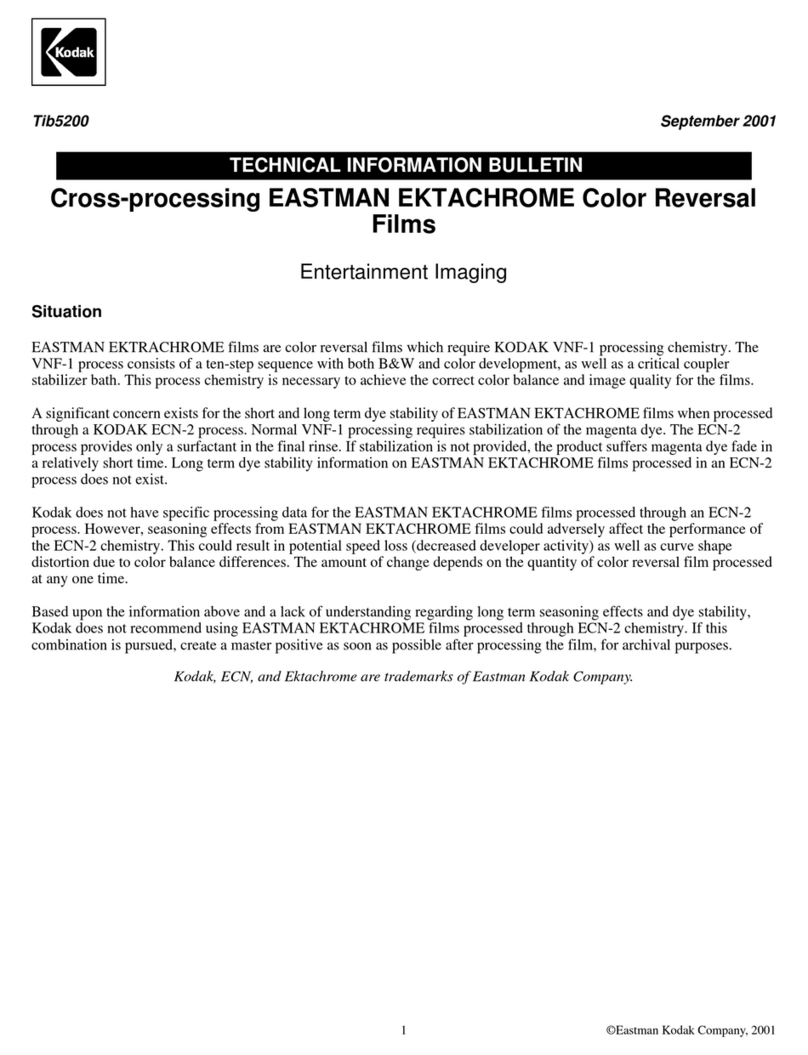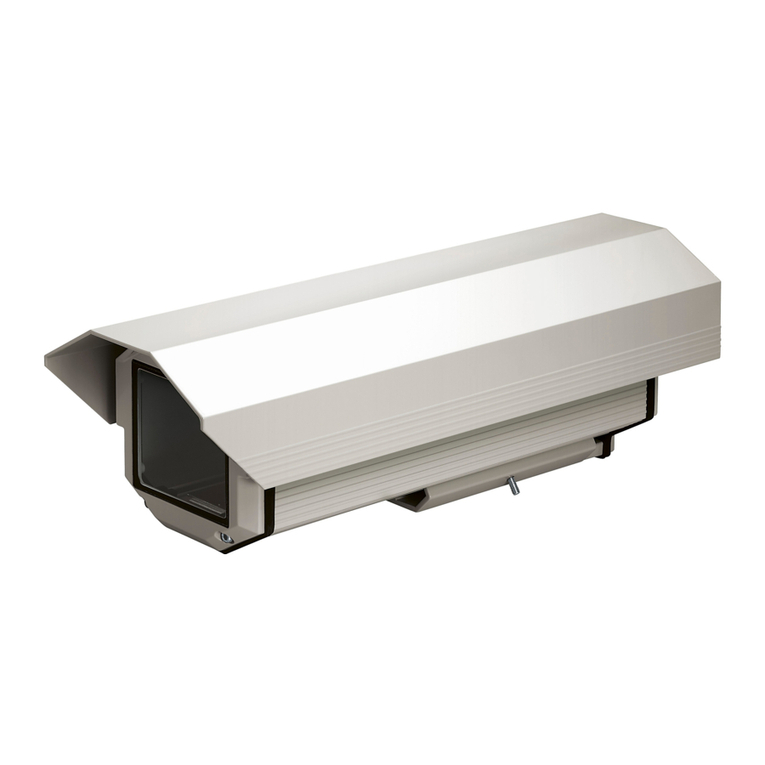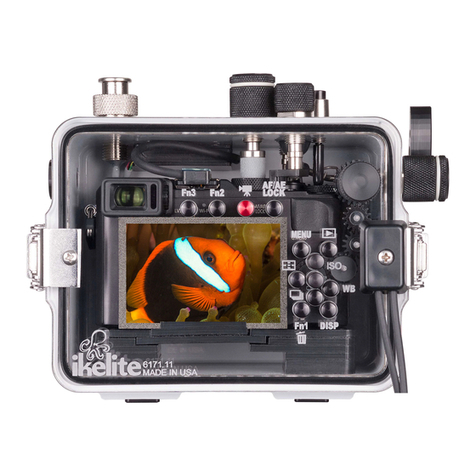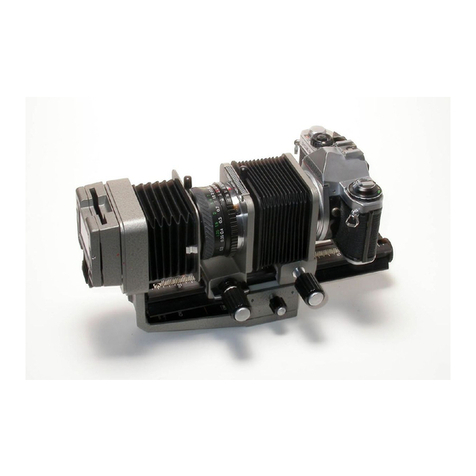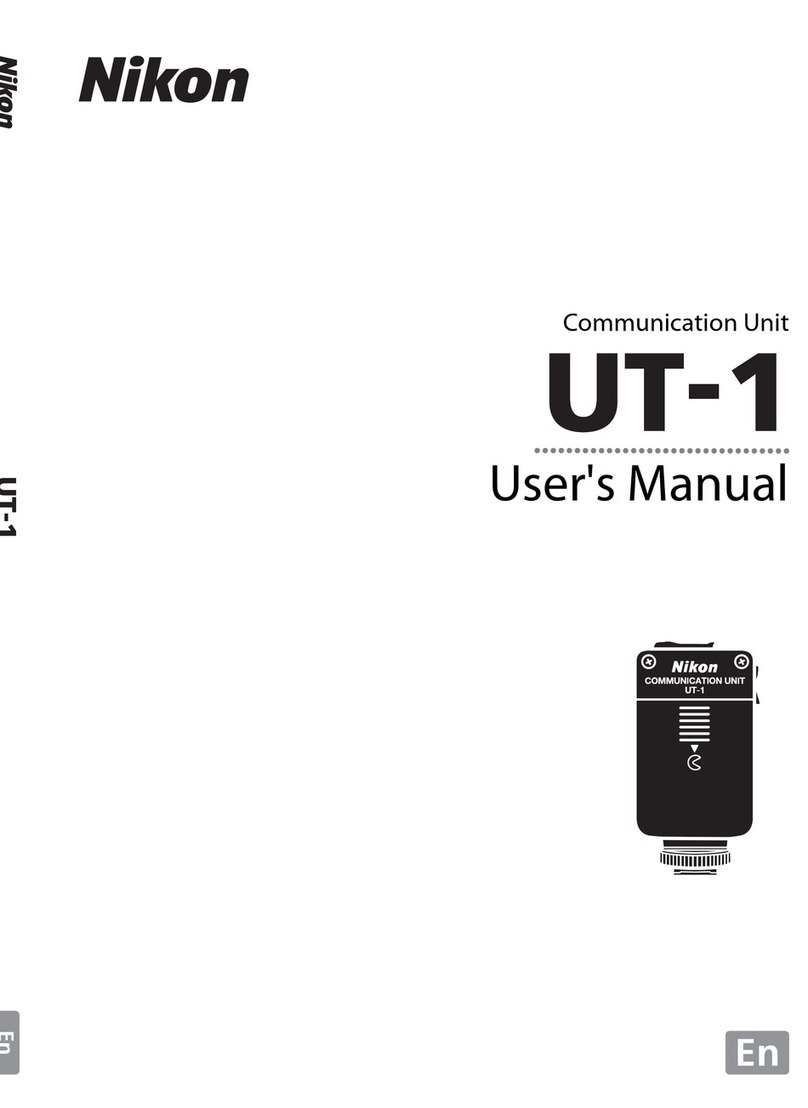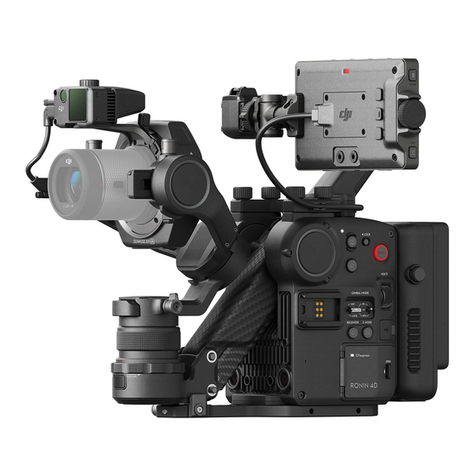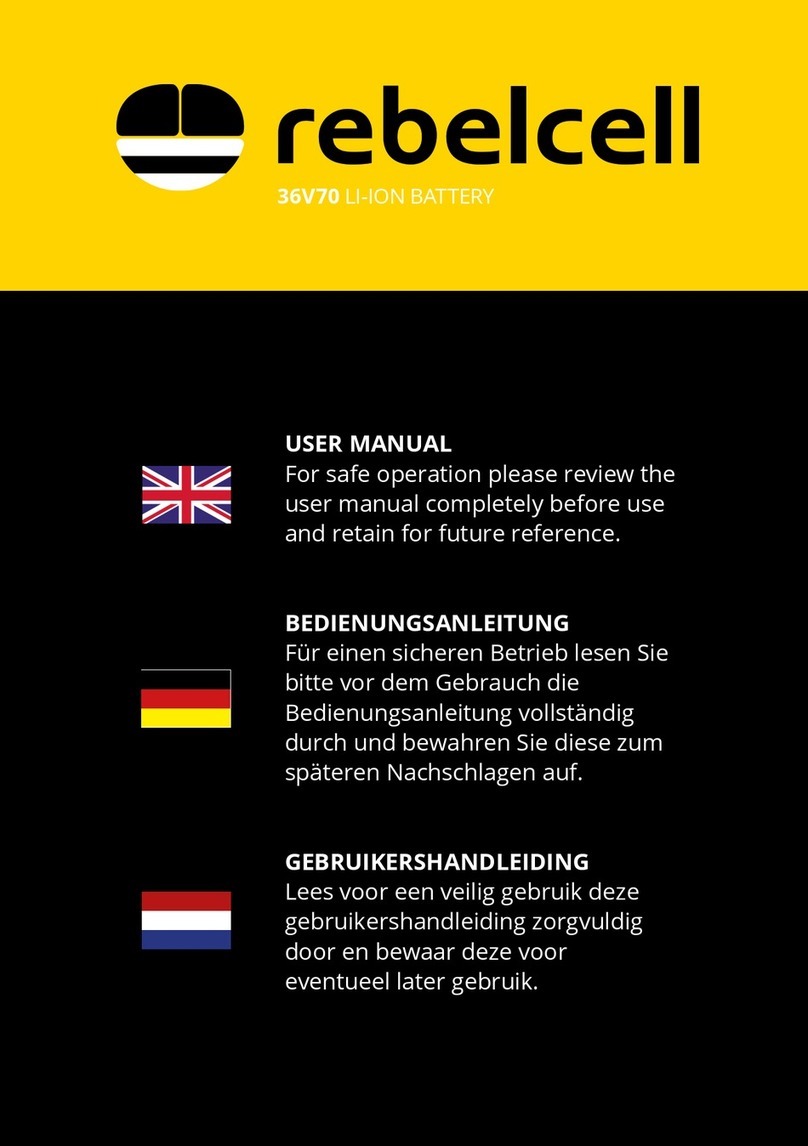
3
1Schnellwechselplatte
mit 1/4 Zoll Gewinde 8Mittelsäule
2Sicherungsstift Stativplatte 9Kälteschutzgriff
3Feststellschraube
Panoramaeinstellung 10 Stativbein
4Festellhebel Kugelkopf 11 Gewinde zur Arretierung
der Stativbeine
5Arretierung Mittelsäule 12 Gewichthaken
6Hebel zur Beinwinkelverstellung 13 Gummifüße / Spikes
7Gewinde zur De-/Montage
der Stativbeine
1. Allgemeine Hinweise
• Achten Sie darauf, dass alle Schrauben fest angezogen sind
• Vorsicht bei der Beinwinkelverstellung - Quetschgefahr
• Die Schraubgewinde der Stativbeine sowie die Mittelsäule können mit
max. 3 Umdrehungen gelöst oder befestigt werden
• Gefahr von Beschädigungen durch Herunterfallen der Kamera bei nicht sachgerechter
Befestigung der Einzelteile
• Vergewissern Sie sich, dass vor jeder Benutzung Ihr Equipment sicher und fest sitzt
• Die Schnellwechselplatte ist kompatibel mit anderen Arca Swiss Schnellwechselplatten
2. Stativ-Variationen
1. Kamerastativ:
• Drehen Sie die Stativbeine um 180 Grad
• Stellen Sie sicher, dass die Stativbeine in ge-
wünschtem Winkel einrasten
• Drehen Sie die Arretierung an den Stativbeinen
um eine geeignete Höhe zu erreichen. Achten Sie
darauf, dass die Schraubgewinde nicht überdreht
werden
Bedienungsanleitung
19733man.indd 3 14.10.2013 15:21:37
